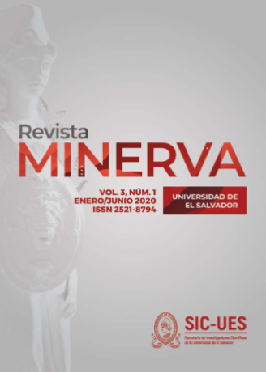Determinación de portadores de Streptococcus pyogenes y otras bacterias causantes de faringitis en adultos jóvenes
Palabras clave:
Streptococcus pyogenes, Portador faríngeo, S. agalactiae y S. dysgalactiae sensibles a BacitracinaResumen
S. pyogenes es uno de los patógenos humanos más agresivos, cuya principal vía de trasmisión es la respiratoria. La falta de datos en nuestro país de la prevalencia de portación asintomática, hacía necesaria determinarla para conocer la exposición a reservorios de esta bacteria. Los objetivos del presente estudio fueron determinar la prevalencia de portadores asintomáticos de agentes de faringitis y comparar cualitativamente el resultado de la incubación con y sin CO2.
Descargas
Referencias
Abraham, T. y Sistla, S. (2016). Identification of Streptococcus pyogenes- Phenotypic Tests vs Molecular Assay (spy1258PCR): A comparative Study. Journal of Clinical and Diagnostic Research, 10(7), 1-3. DOI: 10.7860/ JCDR/2016/20053.8093
Alves, R. y Bevacqua, D. (2012). Investigación de la portación de Streptococcus pyogenes en población adulta sana. Calidad de Vida y Salud, 5(2), 3-10. http://www. calidaddevidauflo.com.ar
Banco Mundial. http://datos .bancomundial.org 2018
Bisno, A. L. (2001). Acute Pharyngitis. New England Journal Medical, 344(3), 205- 211
Bloch, M., Soundy, J. y Zelaya, E. G. (1981). Contaminación bacteriana del personal y la aérea en el hospital Rosales. Revista del Instituto de Investigaciones Médicas, 10 (1), 398-400.
Caraffini, A., Nóbile, C., Figueroa, M. y Costamagna, R. (2007). Streptococcus agalactiae como responsable de patologías distintas a las materno neonatales. Revista Bioquímica y Patología Clínica, 71(1), 31-35.
Ellner, P.D., Williams, D.A., Hosmer, M. E. y Cohenford, M. A. (1985). Preliminary Evaluation of a rapid colorimetric method for the presuntive identification of group A streptococci and enterococci. J. ClinMicrobiol, 22(5) 880-1.
Forbes, B. A., Sahm, D.F. y Weissfeld, A. S. (2009). Bailey & Scott Diagnóstico Microbiológico. Buenos Aires, Argentina: Editorial Médica Panamericana
Heymann, D. L. (20 edición) (2017). El control de las enfermedades transmisibles. Washington, EE.UU: Organización Panamericana de la Salud. https://ncbi.nlm. nih.gov/m/pubmed/783190
Mackenzie, A., Fuite, L., Chan, F., King, J., Allen, U., MacDonald, N. y Diaz- Mitoma, F. (1995). Incidence and Pathogenicity of Arcanobacterium haemolyticum During a 2-Year Study in Ottawa, Clinical Infections Diseases, 21:177-81.
Martín-Baró M. (1985). EL HACINAMIENTO RESIDENCIAL: IDEOLOGIZACION Y VERDAD DE UN PROBLEMA REAL. P.Revista de Psicología Social, 31-50.
Murray P. R., Wold, A. D., Schreeck, C. A. y Washington, J. A. (1976). Effects of selective media and atmosphere of incubation on the isolation of group A streptococci. J. Clin Microbiol 4:54-56.
Pichichero, M. E. y Casey, J. R. (2003). Defining and dealing with carriers of group A streptococci. Contemporary Pediatrics, 20(1), 46.
Romero, A., Requena, M., Martínez, E., Ladera, M. y Jery, R. (2009). Prevalencia de portadores asintomáticos de S. pyogenes y S. pneumoniae en estudiantes del primer año de la Facultad de Odontología de la USMP. Kiru, 6(2), 84-87.
Shah, M., Centor, R. M. y Jennings, M. (2007). Severe Acute Pharyngitis Caused by Group C Streptococcus. J Gen Intern Med, 22(2), 272-274. doi: 10.1007/s11606- 006-0049-4
Spellerberg, B. y Brandt, C. (2015). Streptococcus. En Jorgensen, J. H., Pfaller, M. A., Carroll, K. C., Funke, G., Landry, M.L., Ritcher, S. S. y Warnock, D. W. (11 edición), Manual of Clinical Microbiology (pp.383- 402). Washington, EE.UU: Library of Congress Cataloging-in- Publication Data. doi: 10.1128/9781555817381. ch22
Swedo, S. E., Leonard, H. L., Garvey, M. D., Mittleman, B. B., Allen, A. J., Rapoport, J. L., Dow, S. P. yZabriskie, J.(1998). Pediatric Autoinmune Neuropsychiatric Disorders Associated with Streptococcal Infections: Clinical Description of the First 50 Cases. The American Journal of Psychiatry, 155(2), 264-271
Swedo, S. E., Leonardo, H. L., Mittleman, B. B., Allen, A. J., Perlmutter, S… Lougee, L. (1997). Identification of children with pediatric autoinmune neuropsychiatric disorders associated with streptococcal infections by a marker associated with rheumatic fever. American Journal Psychiatry, 154(9), 110-112.
Waghorn, D. (2016). Group B Streptococcus and upper respiratory tract infection- report of S. agalactiae associated with bacteraemic toncillitis. Open Journal of Clinical & Medical, 2(16), 1151.
Wessels M. (2012). Infecciones estreptocócicas. En Kasper, D., Hauser, S., Jamenson, J., Fauci, A., Longo, D. y Loscalzo, J. (19a Edición) (2012). PRINCIPIOS DE MEDICINA INTERNA DE HARRISON. Ciudad de México, México: Editorial McGrawHill
Winn, W. C., Allen, S. D., Janda, W. M., Koneman, E. W., Procop, G. W., Schreckenberger P. C. y Woods, G. L. (2013). Diagnóstico Microbiológico Texto y Atlas en color. Ciudad de México, República de México: Editorial Panamericana
Descargas
Publicado
Número
Sección
Licencia

Esta obra está bajo una licencia internacional Creative Commons Atribución-CompartirIgual 4.0.


